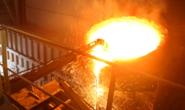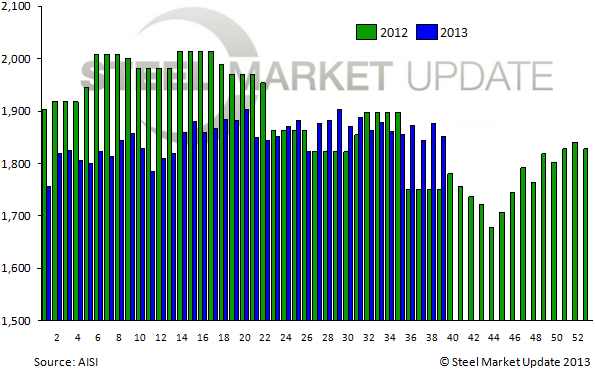Prices

October 2, 2013
AISI Estimated Raw Steel Production & Capacity Utilization Rates
Written by Brett Linton
For the week ending September 28, 2013, the American Iron & Steel Institute (AISI) reported that the U.S. steel industry produced 1,852,000 net tons of raw steel, a 1.3 percent decrease over the previous week but a 5.8 increase over the same week one year ago. The estimated capacity utilization rate is 77.3 percent, down from 78.3 percent last week but up from 70.4 percent last year.
 Estimated total raw steel produced for 2013 YTD is reported to be 72,153,000 NT, down 3.3 percent from the 74,644,000 NT produced through the same period in 2012. The average capacity utilization rate for 2013 YTD is estimated to be 77.2 percent, up from 77.0 percent for 2012 YTD.
Estimated total raw steel produced for 2013 YTD is reported to be 72,153,000 NT, down 3.3 percent from the 74,644,000 NT produced through the same period in 2012. The average capacity utilization rate for 2013 YTD is estimated to be 77.2 percent, up from 77.0 percent for 2012 YTD.
Week-over-week changes per district are as follows: North East at 212,000 net tons, down 5,000 tons. Great Lakes at 648,000 NT, down 6,000 tons. Midwest at 242,000 NT, up 1,000 tons. South at 661,000 NT, down 24,000 tons. West at 89,000 NT, up 9,000 tons. Total production was 1,852,000 NT, down 25,000 tons.







